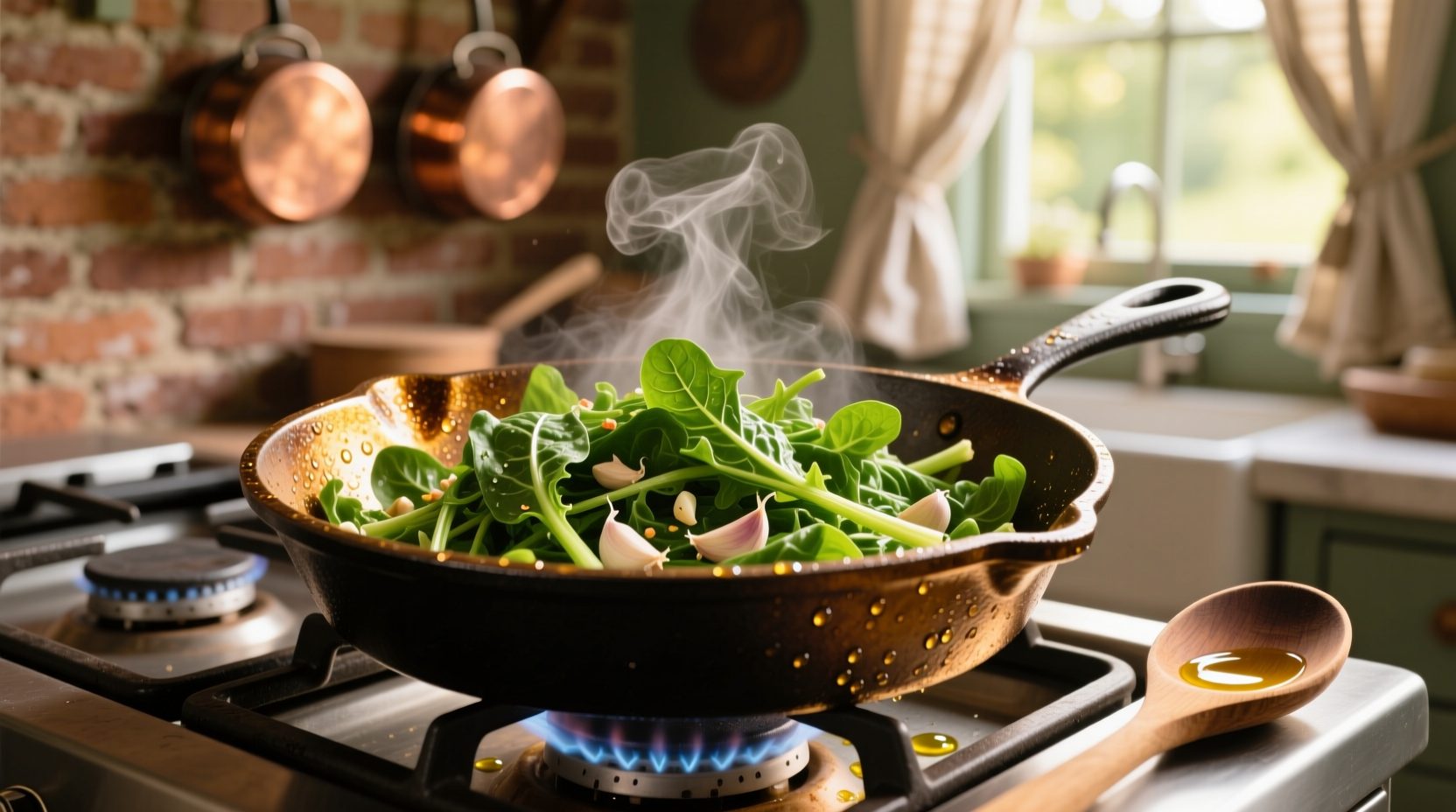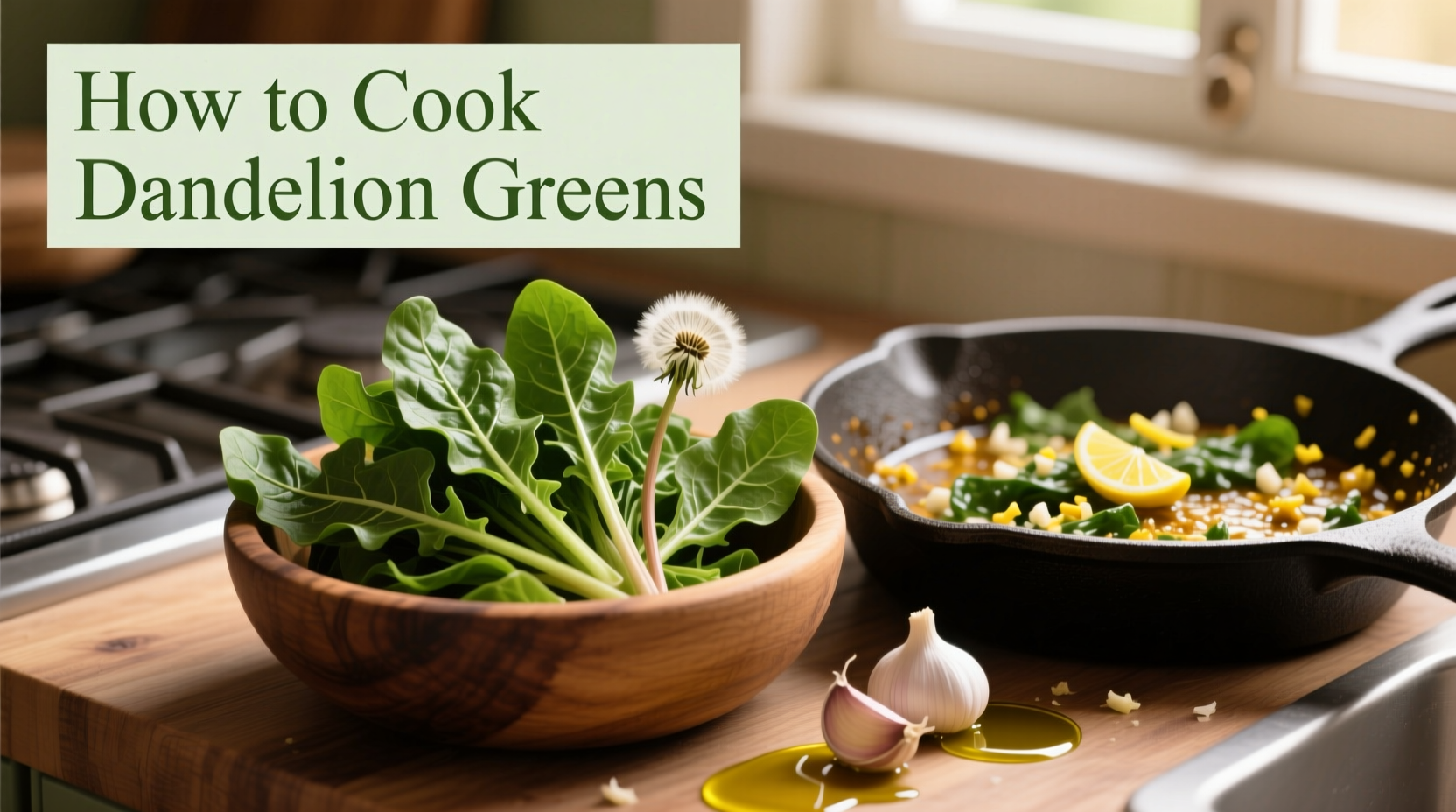If you're looking for how to cook dandelion greens, the best method involves blanching them first to reduce bitterness, then sautéing with garlic and olive oil for 5-7 minutes. This simple preparation preserves their nutritional value while making them deliciously tender with a mild, earthy flavor. Proper preparation transforms these often-overlooked greens into a nutrient-dense side dish that's rich in vitamins A, C, and K.
Many home cooks overlook dandelion greens as nothing more than garden weeds, but these vibrant leafy vegetables have been cherished in culinary traditions worldwide for centuries. With the right preparation techniques, you can transform their naturally bitter profile into a delicious, nutrient-packed addition to your meals. As someone who's cooked with foraged greens professionally for over 15 years, I've discovered that understanding the proper handling methods makes all the difference between an unpleasantly bitter experience and a culinary delight.
Why Dandelion Greens Deserve a Place in Your Kitchen
Dandelion greens (Taraxacum officinale) aren't just resilient weeds—they're nutritional powerhouses. According to USDA FoodData Central, one cup of raw dandelion greens provides 535% of your daily vitamin K needs, 112% of vitamin A, and 32% of vitamin C. Their slightly bitter profile actually contributes to digestive health by stimulating bile production, making them particularly valuable in spring cleansing diets across Mediterranean and Asian culinary traditions.
| Preparation Method | Bitterness Level | Nutrient Retention | Best For |
|---|---|---|---|
| Raw in salads | High | Excellent | Young spring greens only |
| Blanched then sautéed | Low-Moderate | Very Good | Versatile cooking |
| Steamed | Moderate | Excellent | Preserving delicate texture |
| Added to soups/stews | Low | Good | Winter dishes |
Selecting and Preparing Your Dandelion Greens
The quality of your final dish begins with proper selection. For the best flavor and texture:
- Harvest timing matters: Spring greens (before flowering) are significantly less bitter than summer or fall varieties. Penn State Extension notes that dandelion bitterness increases as temperatures rise.
- Look for young leaves: Choose smaller, tender leaves under 6 inches long—they're less fibrous and milder in flavor.
- Avoid contaminated areas: Never harvest from areas treated with chemicals, near roadsides, or in parks where pets frequent. The FDA recommends washing all foraged greens thoroughly to remove potential contaminants.
Essential Preparation Steps to Reduce Bitterness
While some bitterness is characteristic of dandelion greens, excessive bitterness makes them unpalatable. Follow these professional chef techniques:
- Cold water soak: Submerge greens in ice water for 30-60 minutes to crisp them up and draw out some bitterness
- Blanching process: Boil greens for 2-3 minutes, then immediately plunge into ice water—this removes up to 50% of the bitterness while preserving nutrients
- Salt treatment: Toss cleaned greens with coarse salt and let sit for 15 minutes before rinsing—salt helps draw out bitter compounds

Three Foolproof Cooking Methods for Perfect Dandelion Greens
1. Classic Sautéed Dandelion Greens
This Italian-inspired preparation (known as verdure di tarassaco) balances bitterness with complementary flavors:
- Heat 2 tbsp olive oil in a large skillet over medium heat
- Add 2-3 minced garlic cloves and sauté until fragrant (30 seconds)
- Add drained, blanched dandelion greens and 1/4 cup vegetable broth
- Cook covered for 5-7 minutes until tender but still vibrant green
- Finish with lemon juice, red pepper flakes, and sea salt to taste
2. Southern-Style Braised Dandelion Greens
A delicious variation that transforms the greens with smoky depth:
- Start with 4 oz chopped bacon or smoked turkey in a Dutch oven
- Add 1 chopped onion and 2 minced garlic cloves, cooking until soft
- Add 1 lb prepared dandelion greens and 1 cup broth or water
- Cover and simmer for 20-25 minutes until tender
- Season with apple cider vinegar and hot sauce for authentic flavor
3. Quick Steamed Dandelion Greens
Preserves maximum nutrients while creating a delicate side dish:
- Place greens in a steamer basket over 1 inch of simmering water
- Cover and steam for 3-5 minutes until wilted but still bright green
- Toss with toasted pine nuts, lemon zest, and extra virgin olive oil
- Serve immediately as a nutrient-dense accompaniment
Pro Tips for Culinary Success with Dandelion Greens
Professional chefs know these subtle techniques make the difference between good and exceptional dandelion greens:
- Acid balance: A splash of lemon juice or vinegar at the end of cooking cuts through remaining bitterness while enhancing flavor complexity
- Don't overcook: Dandelion greens become slimy when cooked too long—aim for tender-crisp texture
- Pair with fats: Olive oil, bacon, or nuts help mellow bitterness while improving absorption of fat-soluble vitamins
- Season in layers: Add salt during cooking and adjust at the end for perfectly balanced flavor
When Not to Eat Dandelion Greens: Important Safety Considerations
While generally safe, there are important context boundaries to consider:
- Avoid harvesting from areas potentially contaminated with pesticides or heavy metals—urban foragers should consult local environmental protection agency guidelines
- Individuals taking blood thinners should consult their physician before consuming large quantities due to high vitamin K content
- Those with known allergies to daisy family plants should avoid dandelion greens
- Never harvest dandelions from areas treated with lawn chemicals—many municipalities provide safe foraging maps through their parks departments
Storing and Preserving Your Dandelion Harvest
Fresh dandelion greens last 3-5 days in the refrigerator when stored properly:
- Wrap in slightly damp paper towels and store in airtight container
- For longer storage, blanch and freeze in portion-sized bags for up to 6 months
- Consider making dandelion pesto by blending with garlic, nuts, and olive oil
- Preserve spring harvests by canning with proper acidification for safe shelf storage
Transforming "Weeds" into Nutrient-Rich Culinary Treasures
Mastering how to cook dandelion greens properly unlocks a free, sustainable source of nutrition right in your backyard. By understanding the preparation techniques that reduce bitterness while preserving nutrients, you can transform these common plants into delicious, health-supportive dishes. Whether you're foraging wild greens or purchasing them from a farmers market, the methods outlined here ensure consistently delicious results that even bitter-food skeptics will enjoy. Remember that proper preparation is key—blanching followed by quick sautéing creates the ideal balance of flavor and texture that makes dandelion greens a worthy addition to your regular cooking rotation.











 浙公网安备
33010002000092号
浙公网安备
33010002000092号 浙B2-20120091-4
浙B2-20120091-4